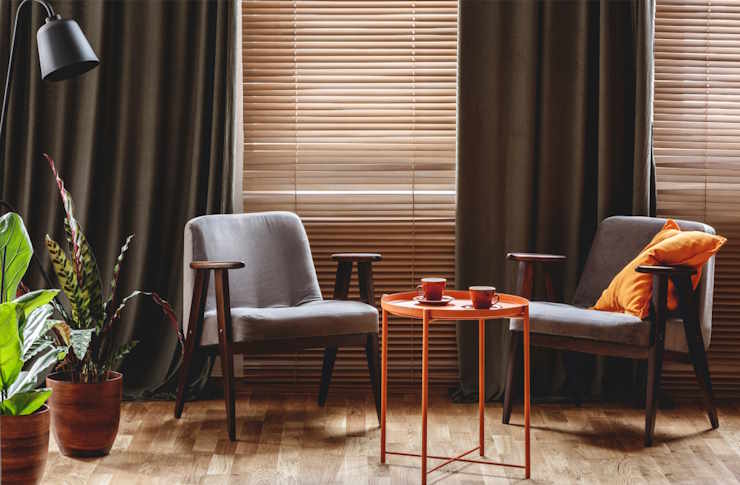Stylish Window Covering Alternatives to Traditional Vertical Blinds
Tired of outdated vertical blinds? There's a world of stylish and modern alternatives waiting to transform your home. This guide explores chic window coverings that offer better light control, superior aesthetics, and enhanced functionality. Discover how you can update your living space and find the perfect window solution that reflects your style.

What Are Modern Blind Alternatives?
Contemporary blind alternatives encompass a wide range of innovative window treatments designed to overcome traditional vertical blind shortcomings. Horizontal blinds, including Venetian and aluminium options, offer precise light control through adjustable slats that tilt rather than slide. Panel track systems provide sleek, minimalist coverage ideal for large windows and sliding doors, featuring fabric or material panels that glide smoothly along tracks.
Cellular or honeycomb blinds represent another popular alternative, featuring unique construction that traps air within hexagonal cells, providing excellent insulation properties. These blinds operate with cordless mechanisms and offer various opacity levels from sheer to blackout. Roman blinds combine traditional elegance with modern functionality, folding into neat horizontal pleats when raised and available in countless fabric options to complement any décor style.
What Are the Key Benefits of Stylish Curtains?
Stylish curtains offer unmatched versatility in both function and design, serving as focal points that can dramatically transform room aesthetics while providing superior light and privacy control. Unlike rigid blind systems, curtains create soft, flowing lines that add warmth and texture to living spaces. They excel at sound dampening, with heavy fabrics significantly reducing external noise levels compared to hard blind materials.
Modern curtain designs incorporate advanced features such as thermal backing for improved insulation, blackout linings for bedrooms, and moisture-resistant treatments for bathrooms and kitchens. The fabric variety allows homeowners to coordinate window treatments with existing furnishings, seasonal changes, or evolving design preferences. Additionally, curtains can be layered with sheers or other treatments to create sophisticated lighting effects throughout different times of day.
How Do Smart Window Treatments Transform Your Home?
Smart window treatments revolutionise home automation by integrating with existing smart home systems, allowing remote control through smartphone apps or voice commands. Motorised blinds and curtains can be programmed to open and close at specific times, responding to sunrise, sunset, or predetermined schedules that enhance security by creating occupied appearance when homeowners are away.
These intelligent systems often include light sensors that automatically adjust window coverings based on ambient light levels, optimising natural light while preventing furniture fading and reducing energy costs. Integration with heating and cooling systems allows smart treatments to respond to temperature changes, closing during hot afternoons to reduce cooling demands or opening during winter mornings to capture solar heat gain.
Cost Comparison and Installation Considerations
Window treatment costs vary significantly based on materials, size requirements, and installation complexity, with budget considerations extending beyond initial purchase prices to include long-term maintenance and energy savings.
| Treatment Type | Price Range per Window | Installation Complexity | Expected Lifespan |
|---|---|---|---|
| Horizontal Blinds | £25-£150 | DIY-friendly | 5-10 years |
| Cellular Blinds | £40-£200 | Moderate | 8-12 years |
| Roman Blinds | £60-£300 | Professional recommended | 10-15 years |
| Panel Track Systems | £80-£250 | Professional required | 10-20 years |
| Motorised Treatments | £200-£800 | Professional required | 15-20 years |
| Custom Curtains | £100-£500 | Professional recommended | 15-25 years |
Installation considerations include window measurements, mounting surface types, and existing hardware compatibility. Professional installation typically costs an additional £50-£150 per window but ensures proper operation and warranty coverage. DIY installation suits simpler treatments but may void manufacturer warranties if completed incorrectly.
Prices, rates, or cost estimates mentioned in this article are based on the latest available information but may change over time. Independent research is advised before making financial decisions.
How Do Window Treatments Impact Home Value?
Quality window treatments contribute measurably to property value by enhancing curb appeal, improving energy efficiency ratings, and creating move-in ready presentation that appeals to potential buyers. Estate agents frequently emphasise that well-chosen window coverings help properties show better during viewings, with coordinated treatments throughout creating cohesive, professionally designed appearance.
Energy-efficient treatments can reduce heating and cooling costs by up to 25%, with thermal curtains and cellular blinds providing documentation for energy performance certificates. Smart home integration adds particular appeal for tech-conscious buyers, with motorised systems often highlighted as premium features that justify higher asking prices.
Custom treatments generally offer better return on investment compared to standard options, as they demonstrate attention to detail and quality that resonates with discerning buyers. Properties featuring updated window treatments typically spend less time on market compared to those with outdated or worn coverings, making strategic updates worthwhile even for short-term ownership plans.
Modern window covering alternatives offer compelling advantages over traditional vertical blinds through improved functionality, enhanced aesthetics, and better long-term value. Whether prioritising energy efficiency, smart home integration, or design flexibility, contemporary options provide solutions that address diverse household needs while contributing to overall home improvement goals. Careful consideration of costs, installation requirements, and long-term benefits ensures informed decisions that enhance daily living while protecting property investments.




